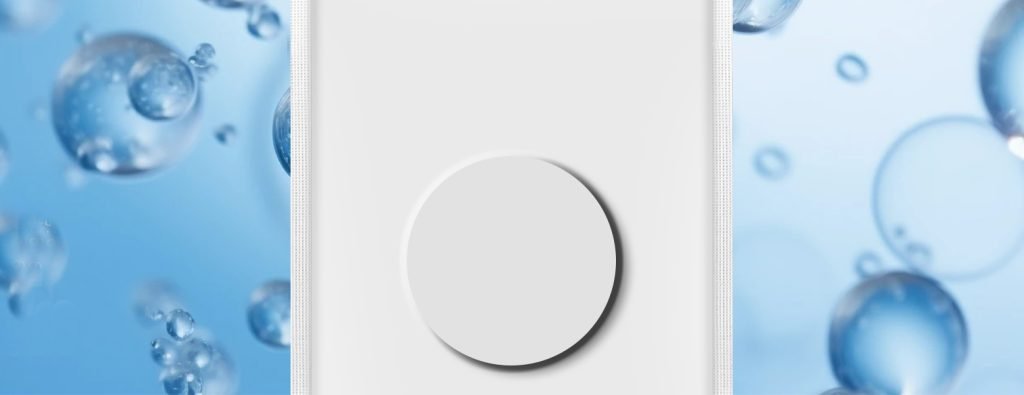What Are Blemish Patches?
Blemish patches, also known as acne or pimple patches, are small adhesive hydrocolloid dressings designed for targeted acne treatment. These patches stick directly onto blemishes, creating a moist environment that speeds up healing and prevents scarring by isolating the area from bacteria, dirt, and fingers.
A noticeable benefit of using blemish patches is their ability to conceal while they heal. Available in translucent or skin-toned varieties, they cover imperfections, making blemishes less visible as they heal. Whether during a day out or in the comfort of home, these patches can provide both physical and psychological comfort to individuals battling acne.
Studies have shown that blemish patches can significantly reduce the healing time of acne lesions. An aritcle written by Stephanie S. Gardner, MD stated that lesions treated with hydrocolloid patches healed 40% faster.
What Ingredients Are Found in Blemish Patches?
At the heart of most blemish patches is hydrocolloid, a compound that absorbs moisture and forms a gel-like barrier, trapping pus and exudate from the pimple. This key ingredient promotes healing by maintaining moisture and protects against bacterial contamination.
Active Ingredients for Enhanced Treatment
- Salicylic Acid: Helps to dissolve debris that clogs pores and promotes faster healing of pimples.
- Tea Tree Oil: Known for its anti-inflammatory and antimicrobial properties, it helps soothe the skin and reduce swelling.
- Benzoyl Peroxide: Targets bacteria that cause acne and helps clear out the infection.
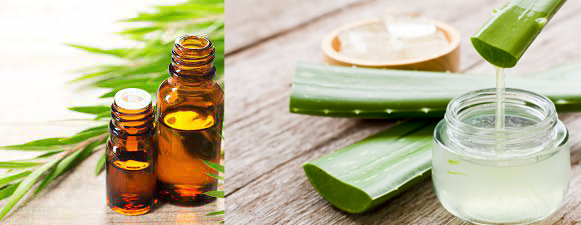
Some anti-inflammatory ingredients can speed-up the treatment
Skin Soothing Additives
- Aloe Vera: Offers soothing and moisturizing benefits, ideal for calming inflamed skin.
- Vitamin E: An antioxidant that helps strengthen the skin barrier and promotes healing.
Newer Formulations
- Microneedles: Tiny, dissolvable needles that can deliver active ingredients deeper into the skin.
- Hyaluronic Acid: For its hydrating properties, ensuring that the skin doesn’t dry out while undergoing treatment.
How to Apply Blemish Patches?
- Cleanse the Skin: Start by washing your face with a gentle cleanser to remove oil, dirt, and makeup. The area around the blemish should be clean and dry to help the patch adhere properly.
- Choose the Right Size: Select a patch slightly larger than the blemish to ensure it’s completely covered. This provides a secure seal and prevents bacteria from entering.
- Apply the Patch: Peel the patch from its backing and gently place it directly over the blemish. Press down for a few seconds to secure the adhesive.
- Leave It On: Allow the patch to work by leaving it on for at least several hours or overnight. This gives the hydrocolloid time to absorb the blemish exudate.
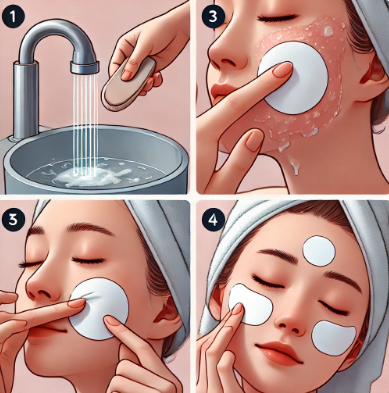
Steps to apply blemish patches
How long to leave blemish patches on?
- Overnight Use: Applying the patch before bedtime is effective as it provides an extended period for the active ingredients to work without interference from external factors like touch and environmental pollutants.
- During the Day: For daytime use, choose a translucent or skin-toned patch to discreetly treat blemishes while you go about your day.
Can Blemish Patches Be Used on Sensitive Skin?
When considering blemish patches for sensitive skin, it’s important to look for products labeled as hypoallergenic. These are formulated to minimize the risk of skin irritation. Additionally, patches that are free from aggressive active ingredients such as high concentrations of salicylic acid or benzoyl peroxide may be preferable to avoid potential irritations.
For individuals with sensitive skin, applying a blemish patch can be a soothing alternative to more abrasive acne treatments. The patch not only shields the blemish from external irritants that can exacerbate inflammation but also prevents the direct touching or picking of the pimple, which can lead to further irritation or scarring.
How Long Does It Take for Blemish Patches to Work?
The effectiveness of blemish patches and the time they take to show results can vary based on the type of blemish they are applied to and the individual’s skin type. Generally, blemish patches are designed to work quickly to reduce the appearance of acne.
Immediate Effects: Some patches can show noticeable results within just a few hours. These are typically designed to draw out pus and fluids from pimples, thereby reducing inflammation and size visibly.
Overnight Healing: For more pronounced or inflamed blemishes, leaving a patch on overnight is often recommended. Many users report waking up to significantly reduced pimple size and redness after an overnight application. The extended contact time allows the patch to absorb more exudate and provide a prolonged barrier against irritants and bacteria.
Multiple Applications: Some stubborn blemishes might require more than one application of a blemish patch. Successive applications can be necessary for deep cystic acne or larger pustules that contain more fluid.
Monitoring Progress: It’s important to monitor the blemish after removing the patch to decide if additional treatment is needed. If there is significant improvement, further use of patches may be reduced or adjusted.
In terms of timeline, many users experience a reduction in blemish severity within 24 to 48 hours, with the best results often seen after consistent overnight use. Blemish patches work by creating an optimal healing environment, so the actual time to complete healing can depend on the initial severity of the acne and individual skin healing rates.
Are Blemish Patches Suitable for All Types of Skin Blemishes?
Best Suited for Superficial Blemishes: Blemish patches excel at treating surface-level blemishes such as whiteheads and pustules, where their primary function—absorbing pus and other exudates—is most effective. The hydrocolloid material in the patches works best when it can directly contact the fluid within these types of blemishes.
Limited Effectiveness on Deep Acne: For deeper, cystic acne lesions, blemish patches may not provide the same level of effectiveness. Cystic acne often requires more aggressive treatment methods like oral medications or topical treatments that penetrate deeper into the skin.
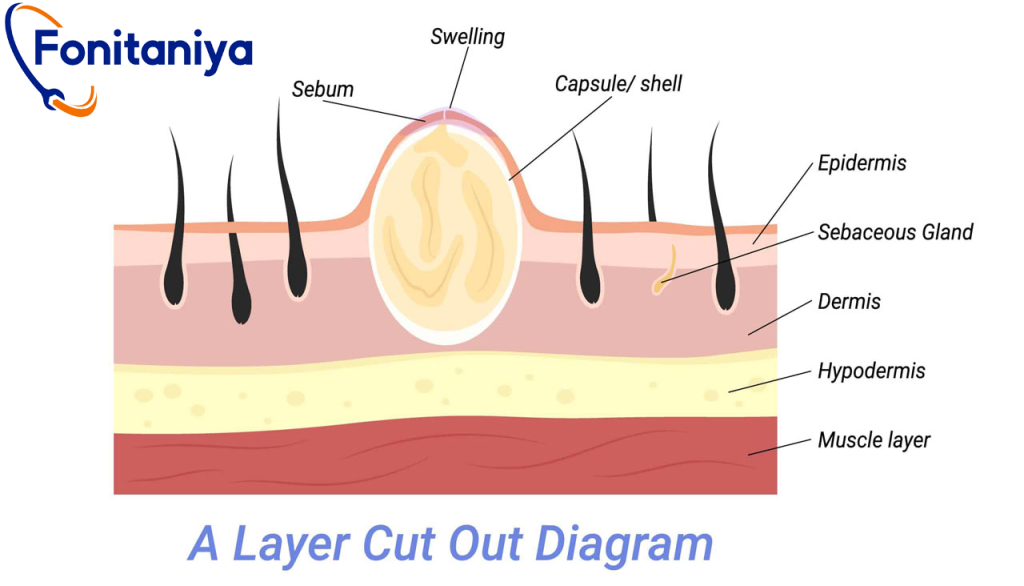
blemish patches are not effectiv on deep acne like cysts
Not Suitable for Blackheads and Closed Comedones: Blackheads and closed comedones do not contain the type of fluid that hydrocolloid patches are designed to absorb. Treatments for these blemishes typically involve ingredients that help dissolve the plug within the pore, such as salicylic acid or retinoids.
Can Help Prevent Infection and Scarring: While not curing all types of blemishes, blemish patches can still play a beneficial role by protecting the affected area from external bacteria and reducing the temptation to pick or squeeze the blemishes, which can lead to scarring and further skin damage.
What Should You Do After Removing a Blemish Patch?
Cleanse Gently: After removing the patch, it’s important to gently cleanse the area. This helps remove any residue from the patch and ensures that the skin is clean. Use a mild cleanser that won’t irritate the skin and pat dry with a soft towel.
Apply a Soothing Treatment: If the skin feels dry or irritated after removing the patch, applying a soothing, non-comedogenic moisturizer can help. Ingredients like aloe vera or hyaluronic acid are beneficial for calming the skin and maintaining hydration without clogging pores.
Preventive Care: To prevent future breakouts, continue to maintain good skincare hygiene, including regular cleansing, exfoliating, and moisturizing. Also, avoid touching or picking at blemishes to prevent scarring and spread of bacteria.
For more detailed guide about what to do after removing blemish pathces, please visit: What to do after removing a pimple patch?
Can Blemish Patches Prevent Future Breakouts?
The short answer is: YES!
Blemish patches discourages touching or picking at the skin, which can transfer bacteria and oils from the hands to the face, triggering new breakouts. Many blemish patches are designed to absorb excess oil. By controlling surface oiliness, these patches can help reduce the likelihood of pores becoming clogged, which is a primary cause of acne. Some blemish patches contain active ingredients like salicylic acid, tea tree oil, or benzoyl peroxide, which can help to clear the pores and reduce the bacterial load on the skin, which may prevent future breakouts in the treated area.
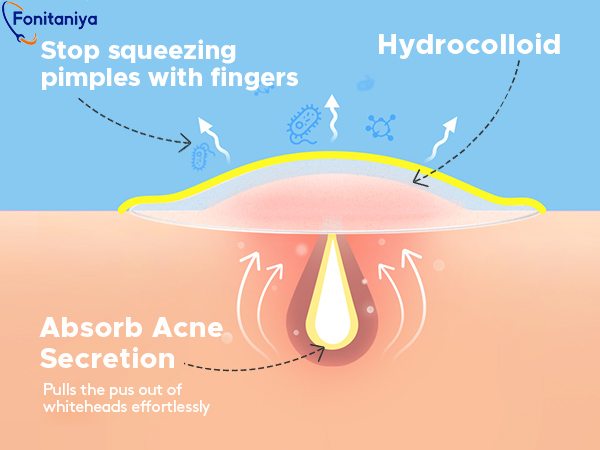
Blemish patches can preven future breakouts
Conclusion:
In conclusion, blemish patches offer a convenient and effective solution for managing acne breakouts, providing immediate relief from inflammation and protecting the skin from external irritants. As we’ve explored, these patches work by creating a sterile environment over the blemish, absorbing excess fluids, and delivering targeted treatments to the affected area. While they are excellent for addressing current skin issues, they also contribute to preventing future breakouts by shielding the skin and reducing the risk of further irritation.
At Fonitaniya, we understand the diverse needs of our customers when it comes to skincare. That’s why we offer DIY and customizable blemish patches tailored to meet specific requirements and skin types. Our products are designed with precision and care, ensuring that they not only treat acne effectively but also align with individual preferences and skin care routines. Whether you’re dealing with occasional pimples or more persistent acne, Fonitaniya provides innovative solutions that empower you to take control of your skin health.
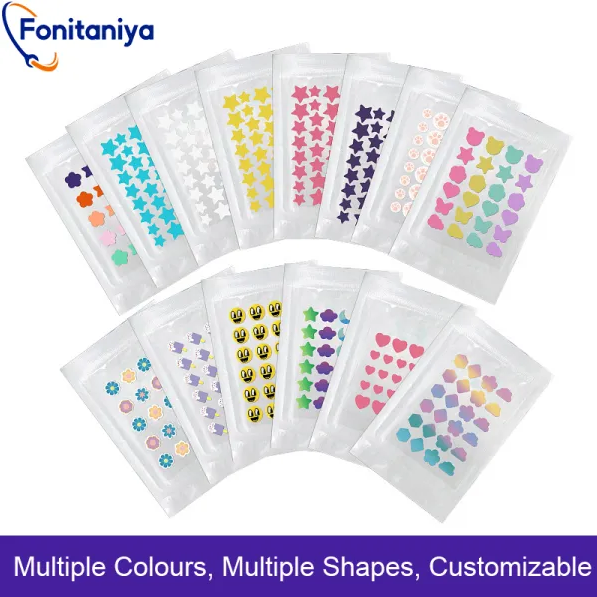
Our Fonitaniya™ DIY/Customizable blemish Patches
With over 14 years of experience in skin care innovation, Fonitaniya is committed to delivering high-quality, reliable products that enhance and simplify your skincare regimen. Our customizable options offer a unique opportunity for users to personalize their treatment, making Fonitaniya a leader in the skincare industry. Trust Fonitaniya to help you achieve clearer, healthier skin with products tailored just for you.
FAQs
What are blemish patches?
Blemish patches are small, adhesive treatments made from hydrocolloid material, which is used to protect wounds and absorb moisture. They help to heal acne by absorbing pus and oil from pimples, reducing inflammation, and protecting the area from bacteria and further irritation.
Can blemish patches cure acne?
While blemish patches can effectively treat individual pimples by absorbing pus and oil, they are not a cure for acne. They are best used as part of a comprehensive skin care routine tailored to treat and prevent acne.
How long should you keep a blemish patch on?
Blemish patches should typically be left on for at least several hours or overnight to allow the hydrocolloid material to absorb fluids from the pimple. They can be removed once they turn white from the absorbed fluids.
Are blemish patches visible on the skin?
Many blemish patches are designed to be translucent or skin-toned to blend in with your skin, making them less noticeable. There are also more visible options, such as those with colors or patterns, which some people may choose to make a style statement.
Do blemish patches work on all types of acne?
Blemish patches work best on pimples that have come to a head, or where there is noticeable pus at the surface. They are less effective on blackheads or cystic acne, which are located deeper in the skin.
Can you wear makeup over a blemish patch?
It is generally possible to apply makeup over a blemish patch to help conceal it, although the effectiveness can vary depending on the type of makeup and the patch’s thickness and color.
Are there any side effects to using blemish patches?
Blemish patches are generally safe and side effects are rare. However, some people with sensitive skin might experience irritation or an allergic reaction to the adhesive used in some patches.



